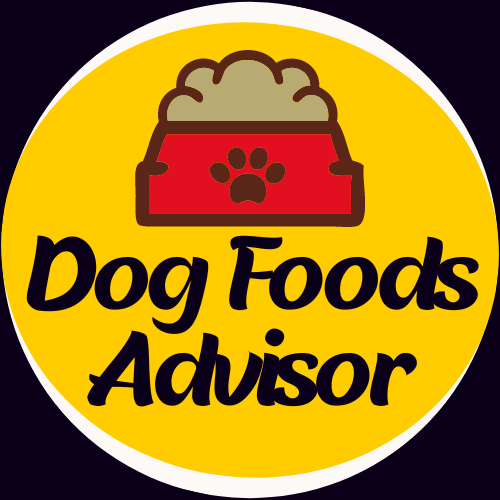Reading the label on your dog’s dry food
Attention all dog lovers! Have you ever wondered what’s really in your furry best friend’s dry food? You may be surprised to learn that not all pet foods are created equal. Whether you’re a seasoned dog owner or new to the game, it can be overwhelming trying to navigate through the various options available. That’s why reading the label on your pup’s dry food is vital.
We’ll explore why this simple act is so important and how it can help ensure your dog lives a long and healthy life. So grab a cup of coffee, snuggle up with your furry companion, and let’s dive in!
Table of Contents
- Labels on Dog Food
- Understanding the Ingredients
- Common Nutritional Deficiencies & Preventions
- Different Types of Dry Food and Their Benefits
- Reading Serving Instructions Carefully
- Evaluating Long Term Food Quality
Labels on Dog Food
When it comes to your dog’s dry food, it is important that you take the time to read the label. This is because the label will provide you with important information about the food, such as the ingredients, calories, and other nutrients.
The ingredients are always listed in order of largest to smallest quantity by weight. So, if you’re looking for a food that is high in protein, you’ll want to choose one where meat or another animal-based protein source is listed first. The guaranteed analysis lists the minimum percentages of crude fat and crude fiber and the maximum percentages of moisture and ash in the food.
The calorie content of dog food is important to consider, especially if your dog is overweight or obese. You’ll want to choose a food that has a moderate calorie content so that your dog can maintain a healthy weight. Other nutrients that are important to pay attention to include protein, fat, carbohydrates, and fiber.
Make sure you take the time to read the label on your dog’s dry food before purchasing it. This way, you can be sure that you’re giving your furry friend the best possible nutrition.
Understanding the Ingredients
When it comes to your dog’s food, it is important to read the label in order to understand the ingredients. The first ingredient listed on the label is the largest by weight, and all ingredients are listed in order of weight. If you see meat listed as the first ingredient, that means there is more meat than any other ingredient in the food.
The Association of American Feed Control Officials (AAFCO) defines a complete and balanced diet as one that contains all of the nutrients required for maintenance, growth and reproduction. These nutrients include protein, fat, carbohydrates, vitamins and minerals.
Ingredients are listed on pet food labels in two different ways: either as “named” or “generic” ingredients. Named ingredients must be specified by their common or usual names, while generic ingredients can be listed simply as “meat” or “poultry” without specifying the type of meat or poultry.
While some dogs may do well on a diet that consists mostly of named ingredients, others may do better with a diet that contains more generic ingredients. It is important to talk to your veterinarian about which type of food is best for your dog.
Common Nutritional Deficiencies & Preventions
There are a variety of common nutritional deficiencies that can affect dogs, and it’s important to be aware of them in order to keep your dog healthy. The most common deficiencies include:
- Vitamin A: Dogs need vitamin A for healthy skin and coat, and lack of this vitamin can lead to dryness, itchiness, and infection. Vitamin A can be found in foods like liver, eggs, and carrots.
- Vitamin B12: Vitamin B12 is essential for proper red blood cell formation, and lack of this vitamin can cause anemia. Foods rich in vitamin B12 include liver, fish, and poultry.
- Vitamin D: Vitamin D is necessary for strong bones and teeth, and lack of it can lead to joint pain or arthritis. Good sources of vitamin D include fatty fish, eggs, and fortified milk.
- Calcium: Calcium is crucial for strong bones and teeth, as well as proper muscle function. It can be found in dairy products like milk and yogurt, as well as leafy green vegetables.
To prevent nutritional deficiencies in your dog, make sure to feed them a well-balanced diet that includes all the essential vitamins and minerals . Also, check with your vet to make sure your dog is getting the correct amount of supplements. Finally, be mindful of any medical conditions that may require changes to their diet.
Different Types of Dry Food and Their Benefits
There are a variety of different types of dry food available for dogs, and each has its own set of benefits. Here is a look at some of the most popular types of dry food and their benefits:
- Grain-free dry food: Grain-free dry food is a great option for dogs with allergies or sensitivities to grains. This type of food is typically made with alternative sources of carbohydrates like potatoes or sweet potatoes.
- High-protein dry food: High-protein dry food is an excellent choice for active dogs or those who need to maintain muscle mass. This type of food is usually made with meat as the primary protein source.
- Limited ingredient dry food: Limited ingredient dry food is a good option for dogs with allergies or sensitivities to certain ingredients. This type of food typically contains only a few key ingredients, making it easier to identify potential triggers.
- Senior citizen formula dry food: Senior citizen formula dry food is designed to meet the specific nutritional needs of older dogs. This type of food often contains lower levels of calories and fat, and higher levels of fiber and omega-3 fatty acids.
No matter what type of dry food you choose for your dog, be sure to read the label carefully to ensure that it meets your pet’s specific dietary needs.
Reading Serving Instructions Carefully
When it comes to feeding your dog, it is important to read the label on their dry food carefully. The serving size and number of calories per serving can vary significantly from one brand to another. Make sure you are aware of how much your dog should be eating and adjust the amount accordingly.
Also, pay close attention to the ingredients list. Some brands put fillers in their food that can cause digestive issues for your pup. Choose a food that has quality ingredients that will help keep your dog healthy and happy.
Evaluating Long Term Food Quality
When it comes to your dog’s food, you want to make sure you’re getting the best quality possible. Here are some tips for evaluating long-term food quality:
- Check the ingredient list – You should be able to easily identify all of the ingredients in your dog’s food. If there are any unfamiliar ingredients, do some research to find out what they are and what they’re used for.
- Look at the guaranteed analysis – This will give you an idea of the minimum percentage of protein and fat in the food, as well as the maximum percentage of fiber and moisture.
- Inquire about where the ingredients come from – The quality of the ingredients is important, so find out where they’re sourced from.
- Ask about the manufacturing process – How is the food made? Is it produced in a facility that also processes other foods?
- Find out about storage and shelf life – How long does the food last? Does it need to be refrigerated or frozen?
- Check for certifications – Does the food have any certifications from organizations like AAFCO or USDA? This can help ensure that it meets quality standards.
Conclusion
Reading the label on your pet’s dry food is one of the most important things you can do to ensure their health and wellbeing. By familiarizing yourself with ingredients, purposeful additives and sourcing origins, you will be able to make informed decisions about what is best for your companion. If there are questions that arise while reading labels please feel free to ask a professional or contact us here at Dog Dry Food Helpers – we’re always happy to help!





